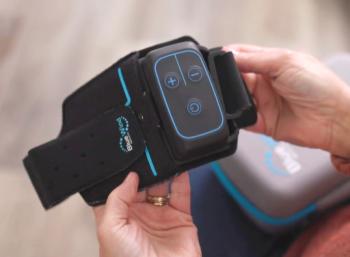
- Medical Economics September 2020
- Volume 97
- Issue 13
Address social determinants improve patient outcomes
There is a growing recognition in health care that many chronic conditions can be improved by addressing social determinants of health first.
There is a growing recognition in health care that many chronic conditions can be improved by addressing social determinants of health (SDOH) first.
“Social determinants of health are those aspects of how we grow, how we live, how we play and how we worship that affect our overhaul health, in addition to the systems and resources set up to provide that,” says Jeffrey F. Hines, M.D., medical director of diversity, inclusion and health equity for Wellstar Health System in Atlanta.
SDOH encompass critical socioeconomic aspects such as access to food, transportation issues, housing conditions, education, neighborhood and environment conditions, access to health care and ethnicity, Hines explains. Experts recommend that, to better help patients with chronic illness, physicians learn more about these potential obstacles to health and how to identify patients struggling with them.
Get educated on the effects of SDOH
Physicians can begin by gaining an understanding of SDOH’s measurable impact on health, if they haven’t already studied it, says Alexandra Schweitzer, M.P.P., a senior fellow at the Mossavar-Rahmani Center for Business and Government at Harvard Kennedy School in Cambridge, Massachusetts.
“It is well documented that unstable housing, inadequate nutrition, social isolation and other social determinants of health worsen chronic conditions like diabetes, heart disease and mental illness,” Schweitzer says. “Physicians in primary care and emergency departments can and do help patients by screening them for social needs, connecting them to community health workers, referring them to social service agencies and helping them navigate through the social services system.”
SDOH tend to affect marginalized and underserved communities the hardest, such as people of color — especially African Americans, who are already at increased risk of a number of chronic illnesses, from hypertension to diabetes — members of the LGBTQ community and the homeless, Hines says. “Because of systems of disparities that have been in place for decades, those communities continue to have higher incidences of chronic illnesses, which affords them [poorer] health outcomes than appropriately resourced communities,” he says.
A 2018 study in The Permanente Journal states that “upwards of 70% of health outcomes are driven by factors beyond health care and that poverty is associated with more years of lost life than smoking and obesity combined.” In addition, a 2014 study in “Public Health Reports” suggests that health behaviors, linked to increased risk of illness and mortality, “are strongly shaped by social factors, including income, education and employment.”
The proof that SDOH affect health is perhaps better represented by the successes that follow when these needs are addressed, Schweitzer says. She notes that fixing a problem related to, for example, housing or food insecurity can change a person’s health outcome. She references a case study of a homeless woman with diabetes whom she calls “Regina.” When Regina got into public housing at age 46, her diabetes improved. She was able to refrigerate her insulin and had a safe space to give herself injections, and she could prepare and eat healthy food on a regular basis.
“That’s one way housing has a ripple effect on diabetes,” Schweitzer says. “By addressing housing, and with a lot of case management, [Regina] was able to get into a much more sensible routine of prevention.”
Set up seamless screening
Although physicians cannot solve their patients’ socioeconomic problems alone, they can use SDOH screening questions to get to know their patients’ needs better and connect with community resources and care navigators, if appropriate, Schweitzer says.
“The best way to integrate this work into their practices is to build it into what they are already doing; for example, by using medical assistants to do screening and documenting results in the electronic medical record,” Schweitzer says.
Erin Jospe, M.D., chief medical officer at Kyruus, a provider data management platform in Boston, says physicians need not create their own SDOH screening documents; a number of options already exist. These include:
- The Hunger Vital Sign, a two-question screening method to determine food insecurity.
- The Everyone Project, organized by the American Association of Family Physicians (AAFP), a series of tools that focus on social needs.
- A toolkit from the American Academy of Pediatrics to assess SDOH in children.
- A guide by the American Hospital Association to help physicians create their own SDOH screening protocols.
For physicians who want support in building their SDOH screening tools, Schweitzer recommends an AAFP publication titled “The Feasibility of Screening for Social Determinants of Health: Seven Lessons Learned.” The authors recommend the following steps:
- Determine readiness to start screening; the guide offers a related checklist.
- Identify the community’s specific SDOH needs.
- Create relevant screening questions.
- Build connections with community resources and develop a strong team to work together on these issues.
- Build the screening into the workflow so it is seamless.
- Start small, with just a few questions.
- Make a plan to sustain follow-up with patients over time.
The Centers for Medicare & Medicaid Services began a program in 2016 called the Accountable Healthcare Communities Model, which promotes clinic-community collaboration around SDOH, to screen and report on health outcomes.
Jospe recommends that physicians “assume nothing” about who might be experiencing hardship in which area and screen every patient for SDOH in the same way.
If physicians who make recommendations find that their patients don’t seem to be improving, Nicole Washington, D.O., M.P.H., a psychiatrist based in Tulsa, Oklahoma, advises probing a little more deeply into the patient’s situation. “Telling a patient to exercise is fine. But what if [patients] don’t have sidewalks or a safe place to walk? We just can’t give cookie cutter advice when people aren’t living cookie cutter lives,” she says. “We may all be in the same storm, but we’re in very different boats.”
Washington recommends asking patients struggling with adherence what is stopping them from implementing a healthy behavior or treatment. “Sometimes we don’t ask those questions. We just label people as being nonadherent,” she says.
Chirag Patel, MD, medical director of population health at Wellstar, recommends asking intentional questions, such as “Are you having trouble getting food to eat? Are you afraid of being evicted? Is there mold in your house?” If patients provide answers that indicate difficulty with one of these key SDOH, the physician can offer a resource list or try to connect the patient with a care navigator, social worker or related staff person.
Partner with community resources
It’s important to begin the process of assessing for SDOH, but Schweitzer cautions against doing it alone: “Physicians probably shouldn’t try to do it all themselves,” she says. “Often one of the best ways to get some help is to provide a community health worker, a nonclinical person who comes from the community and speaks the right language, to establish a rapport and some trust [with patients].”
Helping a person who struggles with an SDOH such as food insecurity isn’t as simple as providing a link to a local food bank, she says. It might require assisting them with filling out the application for Supplemental Nutrition Assistance Program benefits. It might take providing nutritional education and even support with obtaining basic kitchen supplies so patients can cook for themselves.
“A lot of [the difficulty with adopting healthy behaviors] is that people have to struggle to wind their way through the system and figure out all the bureaucracy in the middle of what are probably fairly hectic lives,” Schweitzer says.
Patel says he believes in strong partnerships and advocacy at a local level: “This includes community organizations, corporate, philanthropic and policy partners that want to make a difference in this space.” He suggests partnering with local faith and spiritual groups, which often have “significant influence” on healthy behaviors and practices of their members.
For physicians who don’t yet have a lot of connections, Schweitzer recommends referral platforms like Healthify that help physicians find sources for SDOH needs.
Empower patients
with knowledge
Though it is important for physicians to become better educated in SDOH and health equity practices, Patel stresses that it’s equally important to improve patients’ health care literacy. “I think one of the areas we need to explore more in our country is helping patients know what questions to ask when they go to see the doctor,” he says.
As an example, he cites the high incidence of fibroids in African American women. Many doctors recommend an intervention such as a uterine fibroid embolization or partial hysterectomy, but those treatments can impair the ability to become pregnant. Many young African American women opt for these treatments in their childbearing years because they don’t know about alternatives or what questions to ask. “That’s not an equitable outcome compared to other ethnicities,” Patel says. “We have to give the tools of education and information to our patients so they know what to ask.”
There are numerous ways physicians can think about and screen for SDOH, but what matters is that they begin somewhere, Jospe says: “We need to think about our familiarity with the resources we can bring the best way to highlight them and offer them to our patients, so that when there is stigma about needing to ask for help, that can be taken away.”
Articles in this issue
almost 5 years ago
2020 Burnout Survey Results: Physicians facing unprecedented crisisover 5 years ago
Mental health help is available for physiciansover 5 years ago
How the COVID-19 crisis is exacerbating physician burnoutover 5 years ago
2020 Coding Guide: Get Paid What You're Owedover 5 years ago
What COVID-19 reveals about physician moral injuryover 5 years ago
Nine tips for collecting patient balancesover 5 years ago
Social determinants: COVID-19 reveals societal gaps in careover 5 years ago
Why my new practice is devoted to reversing chronic diseaseover 5 years ago
Digitize admin tasks to reduce staff burdensover 5 years ago
How practices can negotiate with a competing hospitalNewsletter
Stay informed and empowered with Medical Economics enewsletter, delivering expert insights, financial strategies, practice management tips and technology trends — tailored for today’s physicians.














